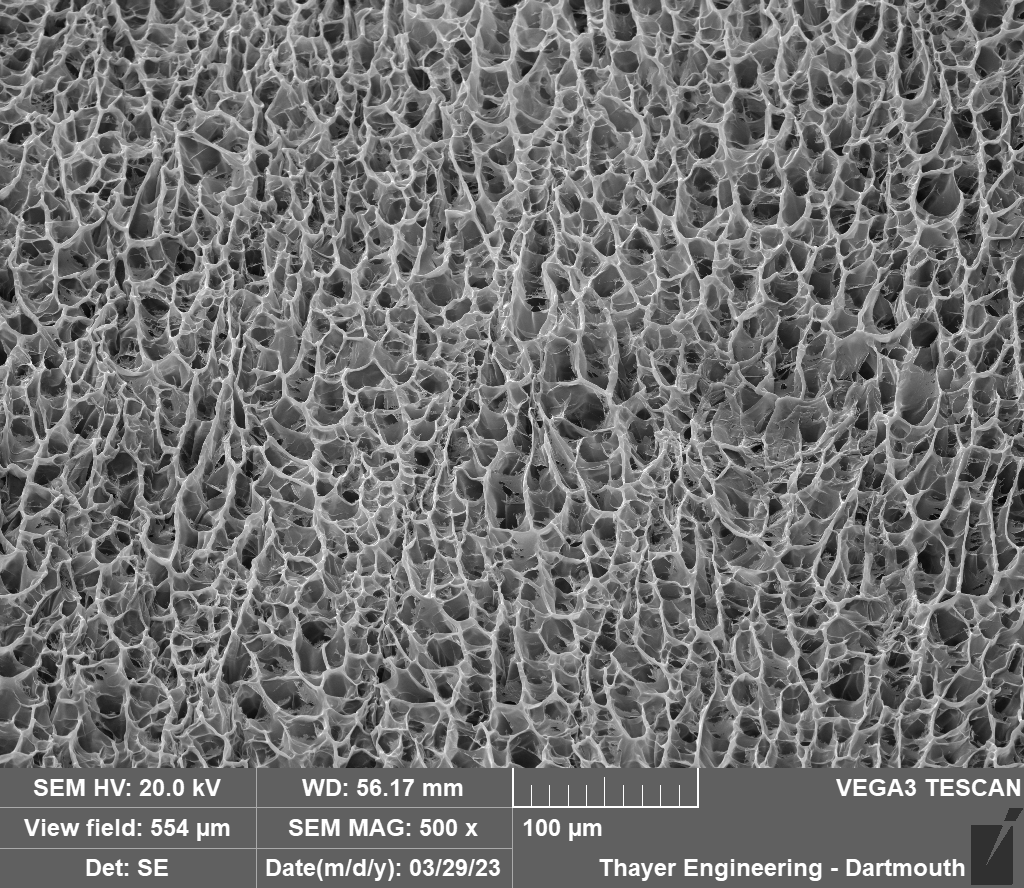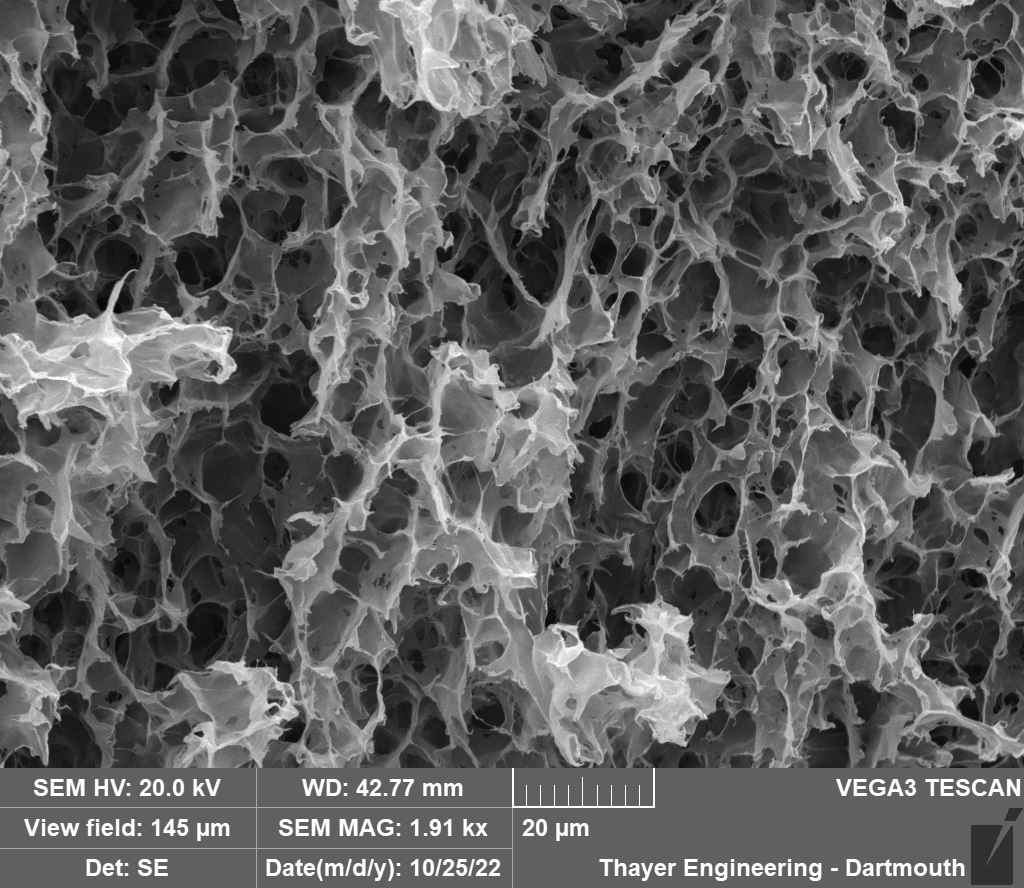Cryogel Scaffold
Fabricated cryogels using hydrogels and tested their mechanical, biological, and chemical properties to assess whether they can be utilized as scaffolds for bone tissue regeneration applications
Prof. Chenfeng Ke’s Functional Materials Lab under the Dartmouth College Department of Chemistry found a pH-controlled shape-morphing hydrogel in 2018. My project at the Hixon Tissue Engineering Lab at Dartmouth College Thayer School of Engineering involved focusing on the question of whether cryogels made out of these hydrogels could be utilized as scaffolds for bone regeneration. Cryogels are being widely tested in tissue engineering as scaffolds due to their peculiar porosity and high specific surface area.
Overview
Design Considerations
I made four samples of cryogels by combining different cryogel fabrication methods using the Ke Lab hydrogels:
WL: DMSO-washed, frozen using Liquid Nitrogen
UL: unwashed, frozen using Liquid Nitrogen
WF: DMSO-washed, frozen at -20°C
UF: unwashed, frozen at -20°C
Takeaways
I performed SEM (Scanning Electron Microscopy) imaging, swelling testing, mechanical compression testing (using an Instron machine), and cell-compatibility analyses to see if any of the cryogels met the requirements for being suitable for tissue regeneration. My analyses pointed to the WL sample being the most suitable. I completed the initial stage of the research project. Further work can be done once Ke Lab researches the chemistry of fabricating hydrogel samples that meet our sizing specifications.




